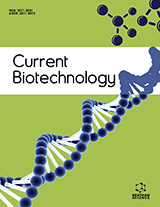Abstract
Background: Contamination of groundwater with nitrate has become an important environmental issue. Microalgae are especially effective agents for the removal of nitrate and nitrite from wastewaters, leading to a variety of bioremediation scenarios where algae assimilate nitrogen and convert it to biomass thus reclaiming contaminated water. This study evaluates the effects of high nitrate and nitrite concentrations on the kinetics of cell growth and nitrogen removal by Chlorella vulgaris.
Methods: Algal growth and nitrate removal from media containing initial nitrate concentrations ranging from 1094 to 3000 mg L-1 were monitored in batch growth. Nitrite as the sole N source and simultaneous removal of nitrate and nitrite was also investigated.
Results: Maximum growth and nitrate removal rates were 3.6 g L-1 and 16.4 mg L-1 h-1 respectively at a nitrate concentration of 2400 mg L-1 while 3000 mg L-1 nitrate appeared to inhibit growth yield but not nitrate uptake. Nitrite as the sole N source (400 mg L-1) resulted in optimal growth of Chlorella vulgaris with a maximum biomass of 3.16 g L-1. Nitrate and nitrite concentrations of 800 and 150 mg L-1 produced maximum growth rate and biomass production of 7.8 g L-1 biomass.
Conclusion: This study demonstrate the potential of Chlorella vulgaris to efficiently remove and utilize both nitrate and nitrite from culture medium even at high initial concentrations while achieving high biomass productivity.
Keywords: Biomass, Nitrate, Nitrite, .Chlorella vulgaris.
Graphical Abstract
Current Biotechnology
Title:Growth of Chlorella vulgaris in High Concentrations of Nitrate and Nitrite for Wastewater Treatment
Volume: 4 Issue: 4
Author(s): Mahboobeh Taziki, Hossein Ahmadzadeh and Marcia A. Murry
Affiliation:
Keywords: Biomass, Nitrate, Nitrite, .Chlorella vulgaris.
Abstract: Background: Contamination of groundwater with nitrate has become an important environmental issue. Microalgae are especially effective agents for the removal of nitrate and nitrite from wastewaters, leading to a variety of bioremediation scenarios where algae assimilate nitrogen and convert it to biomass thus reclaiming contaminated water. This study evaluates the effects of high nitrate and nitrite concentrations on the kinetics of cell growth and nitrogen removal by Chlorella vulgaris.
Methods: Algal growth and nitrate removal from media containing initial nitrate concentrations ranging from 1094 to 3000 mg L-1 were monitored in batch growth. Nitrite as the sole N source and simultaneous removal of nitrate and nitrite was also investigated.
Results: Maximum growth and nitrate removal rates were 3.6 g L-1 and 16.4 mg L-1 h-1 respectively at a nitrate concentration of 2400 mg L-1 while 3000 mg L-1 nitrate appeared to inhibit growth yield but not nitrate uptake. Nitrite as the sole N source (400 mg L-1) resulted in optimal growth of Chlorella vulgaris with a maximum biomass of 3.16 g L-1. Nitrate and nitrite concentrations of 800 and 150 mg L-1 produced maximum growth rate and biomass production of 7.8 g L-1 biomass.
Conclusion: This study demonstrate the potential of Chlorella vulgaris to efficiently remove and utilize both nitrate and nitrite from culture medium even at high initial concentrations while achieving high biomass productivity.
Export Options
About this article
Cite this article as:
Taziki Mahboobeh, Ahmadzadeh Hossein and A. Murry Marcia, Growth of Chlorella vulgaris in High Concentrations of Nitrate and Nitrite for Wastewater Treatment, Current Biotechnology 2015; 4 (4) . https://dx.doi.org/10.2174/2211550104666150930204835
| DOI https://dx.doi.org/10.2174/2211550104666150930204835 |
Print ISSN 2211-5501 |
| Publisher Name Bentham Science Publisher |
Online ISSN 2211-551X |
 19
19 1
1
- Author Guidelines
- Bentham Author Support Services (BASS)
- Graphical Abstracts
- Fabricating and Stating False Information
- Research Misconduct
- Post Publication Discussions and Corrections
- Publishing Ethics and Rectitude
- Increase Visibility of Your Article
- Archiving Policies
- Peer Review Workflow
- Order Your Article Before Print
- Promote Your Article
- Manuscript Transfer Facility
- Editorial Policies
- Allegations from Whistleblowers
- Announcements
Related Articles
-
New Strategies for Metabolic Support in Cancer
Current Nutrition & Food Science Inhibitors of HDACs - Effective Drugs Against Cancer?
Current Cancer Drug Targets Recent Development and SAR Analysis of Colchicine Binding Site Inhibitors
Mini-Reviews in Medicinal Chemistry Synthesis, Anticancer Activity and Inhibition of Tubulin Polymerization of Bisindole Sulfonates
Letters in Drug Design & Discovery Analgesic and Antineuropathic Drugs Acting Through Central Cholinergic Mechanisms
Recent Patents on CNS Drug Discovery (Discontinued) Trigonelline: A Plant Alkaloid with Therapeutic Potential for Diabetes and Central Nervous System Disease
Current Medicinal Chemistry A Genetic Algorithm- Back Propagation Artificial Neural Network Model to Quantify the Affinity of Flavonoids Toward P-Glycoprotein
Combinatorial Chemistry & High Throughput Screening Antibacterial Function of the Human Cathelicidin-18 Peptide (LL-37) between Theory and Practice
Protein & Peptide Letters Tumor Dormancy and the Angiogenic Switch: Possible Implications of Bone Marrow- Derived Cells
Current Pharmaceutical Design Multifunctional Materials for Cancer Therapy: From Antitumoral Agents to Innovative Administration
Current Organic Chemistry Editorial: The Real Impact of Target Therapy in Cancer Patients: Between Hope and Reality
Current Cancer Drug Targets Inactivation of Pathogenic Microorganisms by Photodynamic Techniques:Mechanistic Aspects and Perspective Applications.
Anti-Infective Agents in Medicinal Chemistry Assessment of miR-212 and Other Biomarkers in the Diagnosis and Treatment of HBV-infection-related Liver Diseases
Current Drug Metabolism Prognostic Value of CD34 Positive Cells in the Lumen of Tumor Vessels in Breast Cancer
Current Angiogenesis (Discontinued) Testosterone as Potential Effective Therapy in Treatment of Obesity in Men with Testosterone Deficiency: A Review
Current Diabetes Reviews Histopathological Determinants of Tumor Resistance: A Special Look to the Immunohistochemical Expression of Carbonic Anhydrase IX in Human Cancers
Current Medicinal Chemistry Expanding the Therapeutic Potential of Statins by Means of Nanotechnology Enabled Drug Delivery Systems
Current Topics in Medicinal Chemistry TGF-β Receptor Signaling Pathways in Angiogenesis; Emerging Targets for Anti-Angiogenesis Therapy
Current Pharmaceutical Biotechnology Evaluation of pH Triggers in situ Porous Controlled Release Micro Balloon Delivery of Amoxicillin for Eradication of Helicobacter pylori
Current Drug Delivery Obesity Pharmacotherapy: Current Perspectives and Future Directions
Current Cardiology Reviews























